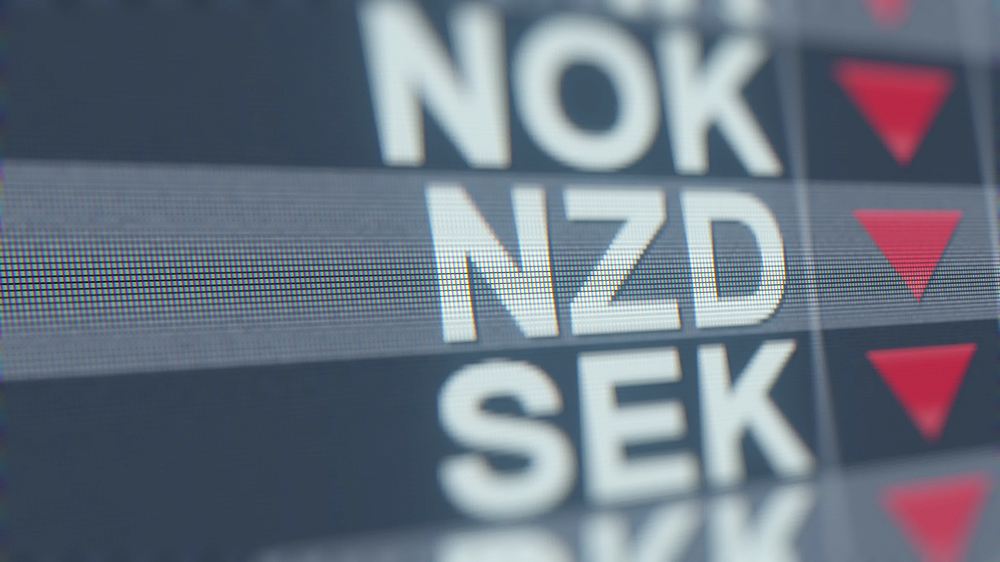
Markets continue to trade with a cautious tone, with Israel vowing to retaliate against Iran’s weekend attack. US equities are down close to 1% and oil prices are barely lower, with Brent crude about USD90. US Treasury yields rose to fresh 2024 highs, with much stronger than expected US retail sales being a factor. The USD has been well supported, with the yen, NZD and AUD notable underperformers, weakening to fresh lows.
Market interest on the open yesterday was in the reaction to Iran’s barrage of drones and missiles, sent directly from its soil for the first time ever towards Israel over the weekend. Almost all projectiles were intercepted, and the consensus was that this was largely a symbolic “attack”, given the advance warning. It was clear that Iran wasn’t seeking to further escalate the conflict. Some of the “risk off” price action from Friday reversed course in early Asia trading, pushing up global rates and equity market futures, and pushing down oil prices.
Key to the next stage of the conflict will be the response of Israel. Overnight, the market traded with a cautious tone, with the message from the Israel military that there will be a response. Israel’s Defence Minister said Israel had no choice but to retaliate against Iran. Brent crude is now barely lower to around USD90.
Another factor driving the market has been ongoing signs of US economic resilience. US retail sales were much stronger than expected, rising 0.7% m/m in March alongside upward revisions to prior data. Ex-auto sales rose 1.0% compared to 0.3% expected, and February was revised 2-ticks higher to 0.5%. The control group, which feeds into GDP, was even stronger at 1.1% m/m. The data suggest that consumer spending was stronger than realised in Q1 and that there is solid momentum into Q2. Second-tier data showed the NAHB’s homebuilder sentiment index flat at 51, as expected, breaking a run of increases, while the volatile Empire manufacturing, lifted by less than expected to -14.3.
The data sent US Treasury yields up with fresh highs traded for the year. The 2-year rate pierced 4.99% before finding support at that level and it is now up only 3bps for the day at 4.93%. The 10-year rate found some support at 4.66% and is currently up 11bps from Friday’s close to 4.63%, or up 8bps from the NZ close.
The strong retail sales data didn’t seem to have a sustained impact on pricing for the Fed, with 25bps of cuts priced for the September meeting, after some initial paring to 21bps, while 43bps is priced for the year. NY Fed President Wiliams repeated his comments from last year, noting that he expected the central bank will likely need to start the process of normalising rates this year.
US equities started the day on a strong note, with the S&P500 up 0.9% in early trading before steadily falling to be currently down 0.9%. The sell-off has been led by the tech sector, with that sector currently down 1.8%.
In currency markets, the yen, NZD and AUD have been notable underperformers, against a backdrop of broad support for the USD. USD/JPY is up 0.6% to 154.20, continuing to test levels not seen since 1990, with higher Treasury yields explaining much of the move. Official intervention by Japan’s MoF would be ineffective against the backdrop of higher US yields and the market ignores the daily ritual of open-mouth operations from Japan’s top currency official Kanda and Minister of Finance Suzuki.
The NZD is trading near its low for the day, coinciding with fresh 2024 lows, just over 0.59. As we go to print, the AUD has traded down to 0.6441, just below the previous year-to-date low of February. NZD/JPY is up slightly to 91.1 but the NZD is weaker on all the other crosses. NZD/AUD is down slightly to 0.9170, with the NZD showing falls of around ½% against EUR and GBP, the latter two only showing small falls against the USD despite the stronger US retail sales data.
Yesterday, the PBoC continued to attempt to support the yuan, via its daily reference rate fixing for CNY on the strong side. Furthermore, it kept the 1-yr lending rate unchanged at 2.5% and withdrew net cash from the banking system for a second consecutive month, attempting to add to the cost of shorting the yuan, preventing further slippage against a strong USD.
Global forces sent NZ rates lower yesterday, with NZGBs falling 7bps across the curve, continuing to outperform on a cross market basis and against swap. The 10-year rate closed at 4.82%. In the swap market the 2-year rate fell 6bps to 5.08% while the 10-year rate fell 5bps to 4.66%. NZ economic activity data remain dreadful. NZ’s performance of services index slumped by an unusually large 5.1pts to 47.5, the weakest level outside of the COVID lockdowns since 2009, consistent with economic recession conditions lingering into Q1.
The economic calendar in the day ahead is full. First up, Chinese activity data this afternoon are expected to show quarterly GDP picked up in Q1, even if the annual figure is expected to slip to 4.8% y/y. The market will also be dissecting the monthly indicators, with particular interest in retail sales, for hints of any signs of improved consumer spending. UK labour market data tonight are expected to show further slippage in growth in average weekly earnings, supporting BoE rate cuts later in the year. We’ll hear from Governor Bailey after the figures are released. Canadian CPI data and second-tier US data are also released, spanning housing starts, permits and industrial production.
[chart;daily exchange rates]




We welcome your comments below. If you are not already registered, please register to comment.
Remember we welcome robust, respectful and insightful debate. We don't welcome abusive or defamatory comments and will de-register those repeatedly making such comments. Our current comment policy is here.